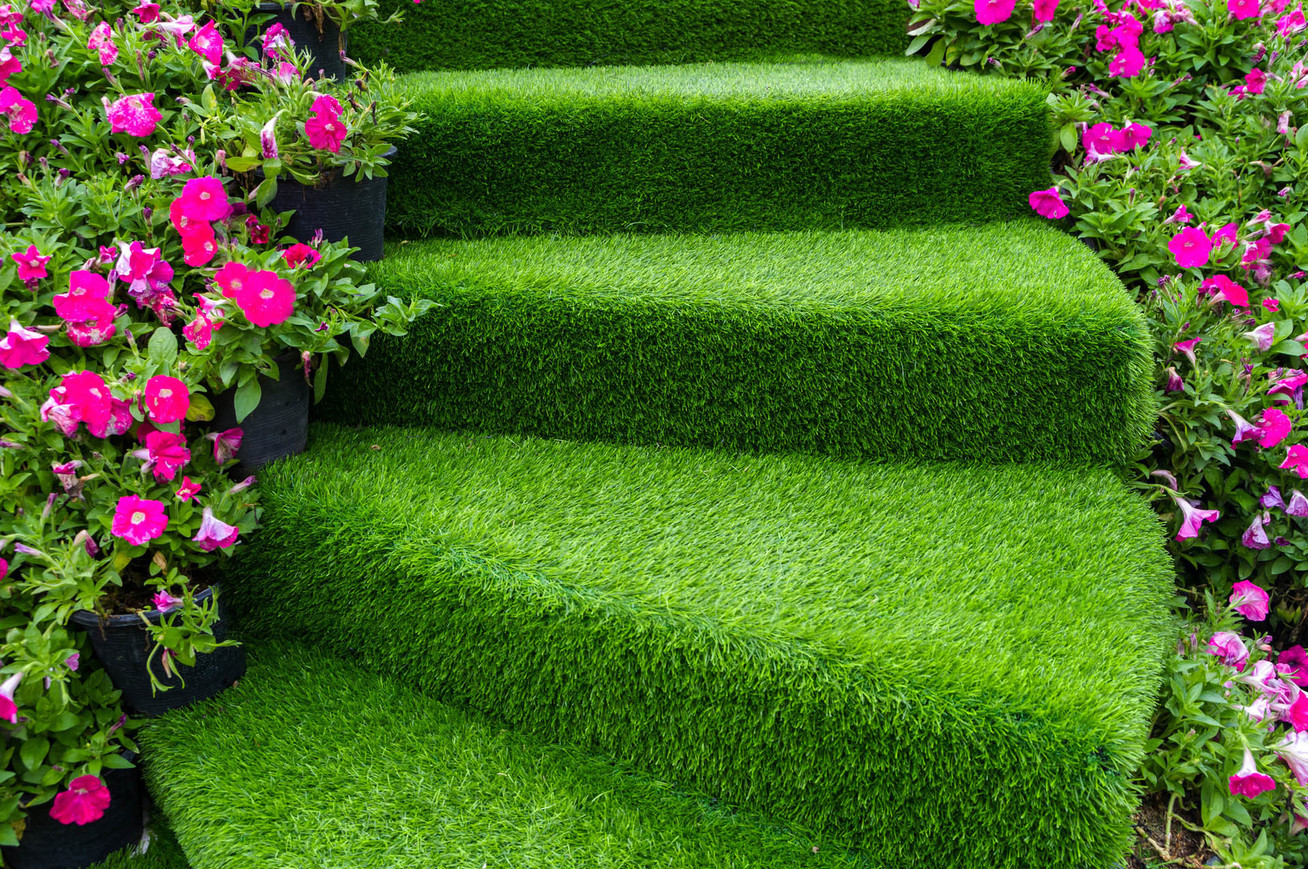How to Maintain Artificial Grass
Artificial grass is known for being low-maintenance, but that doesn’t mean it’s entirely maintenance-free. To keep your synthetic turf looking lush and fresh, it’s important to follow some basic care routines. In this guide, we’ll walk you through the key steps for maintaining your artificial grass, ensuring it stays in top condition for years to come.
1. Regular Cleaning
One of the most important aspects of maintaining artificial grass is regular cleaning to remove debris like leaves, dirt, and twigs. This helps prevent buildup that could affect the turf’s appearance and drainage. Here’s how to do it:
- Use a Leaf Blower or Rake: A leaf blower is ideal for removing leaves and other lightweight debris. If you don’t have one, a plastic rake (not metal) will work to gently remove larger debris.
- Brush the Grass: Periodically brushing the grass will keep the blades upright and looking natural. Use a stiff-bristled broom or a turf rake, brushing against the grain of the grass to prevent matting.
2. Rinse It Down
Dust, pollen, and pet waste can accumulate on your artificial grass over time. Rinsing it with water every now and then helps keep it clean and fresh.
- For Dust and Dirt: A simple garden hose will do the job. Rinse the surface thoroughly, making sure you remove any dust or dirt that has settled on the turf.
- Pet Waste: If you have pets, it’s important to clean up after them. For solid waste, remove it as you would on a regular lawn, and rinse the area with water. For urine, rinse the area more thoroughly to prevent odors. You can use a mix of water and a mild detergent or a special turf cleaner to eliminate smells.
3. Brushing to Maintain Shape
Foot traffic, especially in high-use areas like walkways or play areas, can cause the blades of artificial grass to flatten over time. To restore the grass’s upright position:
- Brush Regularly: Use a stiff brush or a special turf rake to brush the blades up, especially in areas that experience heavy use.
- Brush in Different Directions: For the best results, brush the grass in multiple directions to maintain an even appearance.
4. Addressing Stains and Spills
While artificial grass is stain-resistant, accidents can still happen, such as spilled food, drinks, or other substances. For light spills and stains:
- Water and Mild Detergent: Use a mix of water and mild soap to scrub away stains. Avoid harsh chemical cleaners, as these could damage the turf.
- Wipe or Blot: For heavier spills like oil or grease, blot the area with a paper towel or cloth. Avoid rubbing, as this may spread the stain. Then, rinse the area thoroughly.
5. Weed Control
Artificial grass typically comes with a weed barrier, but some weeds may still pop up around the edges or seams. To keep weeds under control:
- Manual Removal: For occasional weeds, you can simply pull them out by hand.
- Herbicide Use: If you’re dealing with more persistent weeds, use a water-based weed killer or a diluted vinegar solution. Be sure to avoid using harsh chemicals that could damage the synthetic material.
6. Proper Drainage
One of the benefits of artificial grass is that it’s designed with built-in drainage. However, over time, debris may clog the drainage holes, leading to water pooling. To prevent this:
- Ensure Drainage is Clear: Check the turf periodically for any blocked drainage holes. Use a garden hose to flush out any debris and make sure water is draining properly.
- Check Underlayment: If water continues to pool, it could indicate an issue with the installation or the underlying surface. In such cases, you might need to consult a professional to assess the drainage system.
7. Preventing and Managing Mold
Mold or mildew may occasionally form in shaded, damp areas. To prevent mold growth:
- Ensure Good Airflow: Ensure there’s good airflow around your turf by trimming back plants or trees that may block sunlight.
- Treat Mold: If you notice mold or mildew, clean the area with a solution of water and vinegar or a specially formulated turf cleaner to kill the mold spores.
8. Protecting from Heat
Artificial grass can get hot under direct sunlight, especially during the summer. To protect your turf and make it more comfortable for use:
- Provide Shade: Consider adding shade elements like umbrellas, trees, or awnings to reduce direct sunlight.
- Rinse During Hot Weather: If the surface gets too hot, give it a quick rinse with water to cool it down, especially before children or pets play on it.
9. Repairing Damage
While artificial grass is durable, it’s not immune to damage. If you notice any seams coming apart or small tears:
- Minor Repairs: Small issues like loose seams can often be fixed using adhesive glue specifically made for artificial turf.
- Professional Repairs: For larger tears or damage, it’s best to call in a professional who can assess and fix the problem to prevent it from worsening.
Conclusion
Maintaining artificial grass is much easier than taking care of a natural lawn, but it still requires some basic care to keep it looking its best. By following these simple steps—cleaning regularly, brushing to maintain its shape, and addressing any spills or debris—you’ll ensure your artificial turf stays lush, beautiful, and long-lasting.

